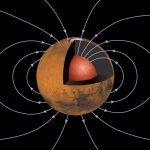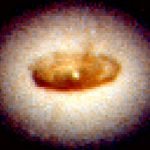Scientists create a recipe book to search for alien life
Have you ever wondered if there's life on other planets?
Scientists at the University of Wisconsin–Madison are asking the same question, but they've taken an...
Helicopters could map the magnetic fields on Mars
A recent study published in The Planetary Science Journal examines how helicopters equipped with a magnetometer could be used to conduct magnetic field investigations...
A collision between gigantic galaxy clusters. Too big, too early
Just when cosmologists have a workable theory for when and how galaxy collisions happened in the early Universe, something challenges it.
In this case, the...
When did the first continents appear in the universe
On Earth, continents are likely necessary to support life.
Continents ‘float’ on top of the Earth’s viscous mantle, and heat from the planet’s core keeps...
Why we can’t predict what’s happening around the Milky Way’s black hole
Ever wonder what's going on at the heart of our galaxy?
Well, scientists are always trying to figure it out too.
Researchers in the Netherlands and...
NASA’s Webb captures baby star’s super-fast wind: what it means for understanding our sun’s...
NASA's James Webb Space Telescope has taken an amazing photo of something called Herbig-Haro 211, or HH 211 for short.
What's special about it?
Well, HH...
The Webb telescope’s new findings make the universe’s speed limit even more mysterious
Have you ever tried to read a sign that was too far away to see clearly?
Imagine doing that, but the sign is in a...
If astronomers see these chemicals in a planet’s atmosphere, there’s likely an advanced civilization...
In an age of ever-growing numbers of exoplanets circling other stars, it’s natural that astronomers search for signatures of advanced civilizations.
Such signatures may have...
Why astronomers are excited about CO2 and methane in the atmosphere of an alien...
Are we alone? This question is nearly as old as humanity itself. Today, this question in astronomy focuses on finding life beyond our planet.
Are...
Supermassive black holes could affect their host galaxy’s chemistry, shows study
Supermassive Black Holes (SMBHs) are impossible to ignore.
They can be billions of times more massive than the Sun, and when they’re actively consuming stars...










